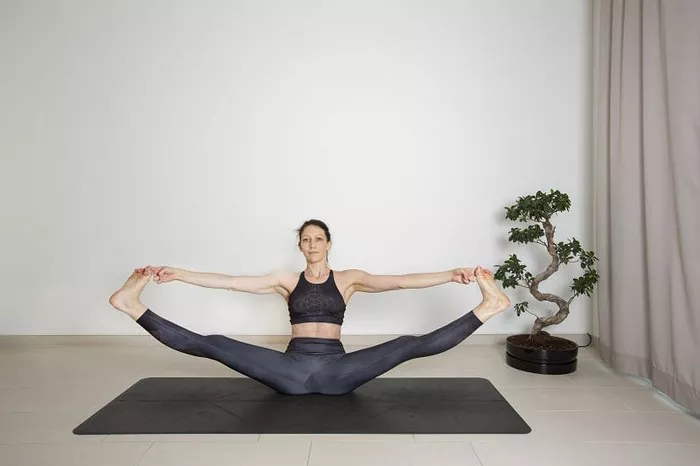Yoga, an ancient practice that traces its roots back to thousands of years, has evolved into various branches and techniques that cater to the diverse needs of individuals. Among these practices, Hatha Yoga and Kriya Yoga are two of the most well-known and revered methods. While they share certain similarities, they also have unique features that distinguish them from one another. A common question that often arises among practitioners and those new to yoga is whether Kriya Yoga is a part of Hatha Yoga. This article aims to explore this question in depth, offering insights into the nature of both practices, their connection, and their individual roles in the broader context of yoga.
Understanding Hatha Yoga
To begin answering the question, it’s important to first understand what Hatha Yoga is and what it entails. The term “Hatha” is derived from two Sanskrit words: “Ha” meaning sun, and “Tha” meaning moon. Together, these words symbolize the balance between opposing forces—such as light and darkness, activity and rest, or the masculine and feminine energies within the body and mind.
Hatha Yoga, as a system of physical postures (asanas), breathing exercises (pranayama), and meditation practices, aims to bring harmony between the body and the mind. It is a preparatory discipline for more advanced yogic practices and is often regarded as the foundational form of yoga. The primary goal of Hatha Yoga is to prepare the practitioner’s body and mind for deeper spiritual practices such as meditation and self-realization.
The Components of Hatha Yoga
Hatha Yoga is composed of various components, all of which work together to cultivate physical health, mental clarity, and spiritual awareness:
Asanas (Physical Postures): These are the physical poses or postures that help to improve flexibility, strength, and balance. Asanas also stimulate the energy centers in the body (chakras) and allow the practitioner to connect with their breath.
Pranayama (Breathing Exercises): Pranayama involves controlling the breath to regulate the flow of life force energy (prana) within the body. Breathing techniques are central to Hatha Yoga as they help to purify the body and calm the mind.
Mudras (Hand Gestures): Mudras are symbolic hand gestures that are believed to direct energy in specific ways. Certain mudras are often practiced during meditation or while performing asanas.
Bandhas (Body Locks): Bandhas are specific body contractions or locks that help to direct energy in the body and facilitate the flow of prana. These locks are often incorporated into asana practice.
Dhyana (Meditation): Meditation is a key component of Hatha Yoga. It helps to quiet the mind and develop mental focus and clarity.
What is Kriya Yoga?
Kriya Yoga is a specific system of yoga that focuses on the science of energy control, particularly through breath and meditation techniques. The term “Kriya” is derived from the Sanskrit word “Kri,” which means action or movement, and “Ya,” meaning the union or connection with the divine. Kriya Yoga is often described as a set of advanced techniques aimed at accelerating the practitioner’s spiritual evolution.
While Kriya Yoga is sometimes referred to as a type of meditation, it also includes specific techniques for controlling prana through breathing exercises. The core principle of Kriya Yoga is the belief that the breath is the bridge between the body and the mind. By mastering the control of breath, practitioners are said to be able to control their mental and emotional states, leading to higher states of consciousness and spiritual awakening.
Kriya Yoga became widely popular in the modern world due to the teachings of great yogis such as Sri Yukteswar, Paramahansa Yogananda, and Swami Sivananda. In his famous book Autobiography of a Yogi, Paramahansa Yogananda outlines the practice of Kriya Yoga and its transformative benefits for the body, mind, and spirit.
The Components of Kriya Yoga
Pranayama (Breathing Techniques): Pranayama plays a crucial role in Kriya Yoga. The techniques used in Kriya Yoga involve deep and controlled breathing to purify the mind and body. These breathing practices are aimed at speeding up the flow of energy through the body and increasing the practitioner’s ability to concentrate.
Dhyana (Meditation): Meditation in Kriya Yoga is used to cultivate a deep state of stillness and awareness. The focus is on inner silence and the direct experience of the divine through heightened consciousness.
Kriyas (Actions or Techniques): Kriya Yoga involves specific practices or techniques that are designed to accelerate spiritual awakening. These techniques can include concentration exercises, specific breathing patterns, and energy channeling practices.
Pranayama and Bandhas: Kriya Yoga integrates both breathing exercises and body locks, similar to those in Hatha Yoga, but with a more focused approach on harnessing energy within the body for spiritual evolution.
Is Kriya Yoga Part of Hatha Yoga?
Given that both Hatha Yoga and Kriya Yoga involve breathing exercises and meditation, one might assume that Kriya Yoga is a form or a subset of Hatha Yoga. However, while there are certain similarities between the two practices, there are also distinct differences that set them apart. Let’s explore these points further.
Shared Aspects Between Kriya Yoga and Hatha Yoga
Pranayama (Breathing Techniques): Both Hatha Yoga and Kriya Yoga emphasize the importance of breath control (pranayama) in cultivating physical, mental, and spiritual well-being. The breath is seen as a vehicle for moving prana (life force energy) through the body. While the pranayama techniques in Hatha Yoga are primarily used for balancing and calming the body and mind, the pranayama in Kriya Yoga is more focused on accelerating spiritual growth.
Meditation (Dhyana): Meditation is a core practice in both traditions. In Hatha Yoga, meditation is often seen as a natural progression after the physical postures have prepared the body. In Kriya Yoga, meditation is not only a tool for cultivating inner peace but is also a powerful means of connecting with higher consciousness.
Energy Flow (Prana): Both systems recognize the concept of prana, the vital life force that permeates all living beings. In both Hatha Yoga and Kriya Yoga, practices are designed to control and direct the flow of prana in the body.
Distinct Differences Between Kriya Yoga and Hatha Yoga
Goal and Purpose:
Hatha Yoga is primarily focused on physical health and well-being. It prepares the body for more advanced practices like meditation, with an emphasis on balance and flexibility.
Kriya Yoga is a more advanced practice aimed at spiritual evolution. It is specifically designed to accelerate the process of self-realization and enlightenment. The focus is on controlling the breath, energy, and mind to reach higher states of consciousness.
Level of Practice:
Hatha Yoga is often considered a beginner or intermediate-level practice. Its postures and exercises are accessible to most people, regardless of their level of fitness or experience.
Kriya Yoga is an advanced practice that requires a deeper understanding of energy control and meditation. It is often recommended for individuals who have already developed a foundation in other yoga practices, including Hatha Yoga.
Techniques:
Hatha Yoga consists of asanas (postures), pranayama, and meditation techniques, which are designed to purify the body and calm the mind.
Kriya Yoga, while also incorporating pranayama, involves a more specific set of techniques aimed at consciously controlling the prana and focusing the mind on spiritual awakening. It often includes advanced forms of meditation and energy channeling techniques that are not typically found in traditional Hatha Yoga.
Conclusion
In conclusion, while Kriya Yoga and Hatha Yoga share certain similarities, particularly in their emphasis on breath control, meditation, and energy flow, Kriya Yoga is not technically a subset or part of Hatha Yoga. Kriya Yoga is a distinct system of practices aimed at rapid spiritual growth, while Hatha Yoga serves as a foundational practice to prepare the body and mind for more advanced yogic disciplines.
Kriya Yoga can be seen as an evolution or a natural progression for advanced practitioners who have mastered the physical aspects of Hatha Yoga and are ready to delve deeper into the subtleties of energy control and meditation. Both systems are valuable in their own right and serve different purposes on the path of self-realization and spiritual awakening.
Ultimately, the journey through yoga is personal, and the practice that one chooses will depend on their individual goals, needs, and experiences. Whether you choose Hatha Yoga to build strength and flexibility or Kriya Yoga to accelerate your spiritual growth, both practices offer profound benefits for the body, mind, and spirit.
Related Topics:














